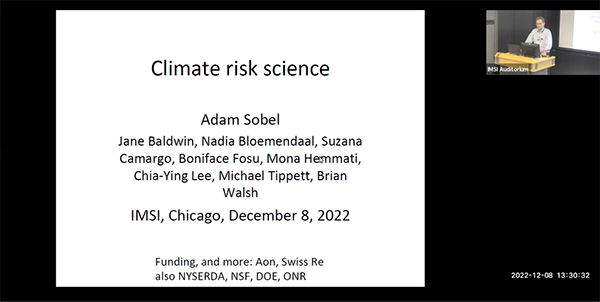Abstract
Climate risks are now being taken into account in an ever-widening range of human activities. By a “climate risk” I mean the probability of some particular loss to human society or ecosystems from climate-related hazards. Quantification of climate risks is a necessary (though by no means sufficient) condition for many kinds of action to reduce those risks.
Risk is the product of hazard (the component related to climate; e.g., the probability of a given level of flooding, heat, wind, etc.), exposure (the assets at risk, which can include human or nonhuman lives), and vulnerability (the level of loss experienced for a given level of hazard). Each can be represented with different degrees of complexity, different balances of empiricism vs. first principles, and different spatial or temporal resolutions. These choices are made differently in different application areas, and it is often not clear why. What is gained or lost by doing one vs. another? How should the right approach depend on the specific problem being solved?
For example, insurance industry catastrophe models, which represent individual weather events in great detail, have not (at least until recently) incorporated climate change in any serious way; while integrated assessment models (at least until recently) have not represented extreme events, nor many other consequential aspects of the climate system. My perception is that specific modeling choices are generally made for pragmatic reasons, and that there is no systematic understanding of what one gains by adding any given degree of freedom.
I will argue that there is a great need for an explicit, open hierarchy of climate risk and impacts models --- as exists in physical climate science --- and that this presents a great intellectual opportunity. In short, we need an academic discipline of climate risk, including a theoretical dimension. I will illustrate some of these ideas with examples from recent work by my colleagues and me on tropical cyclone risk.
